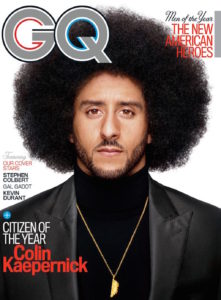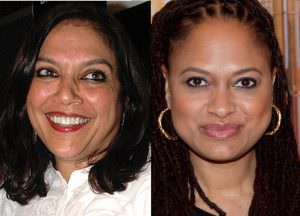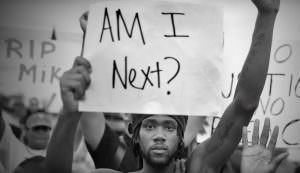‘A Wrinkle in Time’ Forces Us to Think About the Universe in New Ways
Ava DuVernay’s film based on the Madeleine L’Engle novel might be described as "The Wizard of Oz" with physics. Oprah Winfrey in a scene from "A Wrinkle in Time." (Disney Movie Trailers / YouTube)
Oprah Winfrey in a scene from "A Wrinkle in Time." (Disney Movie Trailers / YouTube)
Like many teenagers, Meg Murry (Storm Reid) is thin-skinned, self-conscious and isolated. If you don’t count her brother, Charles Wallace (Deric McCabe), who is 6, Meg is friendless. Not only do the other girls at James Baldwin Middle School scorn her, they make fun of the fact that her physicist father went missing four years ago. They joke that he left—because who would want a geeky daughter like Meg? Social angst has affected Meg’s classroom performance. Teachers whisper about her grades, which are racing to the bottom with her self-esteem.
In short, Meg is in critical need of a fairy godmother. Or, at least, Glinda the Good Witch.
In Ava DuVernay’s “A Wrinkle in Time,” based on the Madeleine L’Engle novel that might be described as “The Wizard of Oz” with physics, Meg gets three godmothers: Oprah Winfrey, typecast as an oracle; Mindy Kaling, an affirmation-spouting goddess of wisdom; and Reese Witherspoon, a mischievous guardian angel. Meg does not help others overcome their deficits like Dorothy. Rather, the godmothers help Meg overcome her own.
To help Meg surmount her social paralysis, the godmothers teach her how to “tesser.” That’s short for “tesseract,” a wrinkling or pleating of the space/time continuum that makes it faster to travel vast distances. With Charles Wallace and a school acquaintance, Calvin (Levi Miller), in tow, Meg tessers to different planets en route to rescuing her father.
Tessering requires neither spacecraft nor atomic energy, simply brainpower. On the first planet, the younglings learn about Camazotz, the dark place that sucks the life force out of its inhabitants. On the second, the characters experience an incomparably beautiful place where orangey-yellow flowers, resembling a cross between irises and monarch butterflies, flutter and gossip. The flowers, Meg learns, speak the language of color.
“Wrinkle” is not a paradigm-shifting spectacle on the order of “Black Panther,” to which it is, unjustly, being compared. Instead, “Wrinkle” is the often breathtaking story of a multiracial clan that looks like many in America and how a magical intervention in a young person’s life transforms her. This is more on the order of “Wizard of Oz” and “Bridge to Terabithia.” It’s rare that a teenage girl is the center of such stories, and that’s part of its enchantment.
Another bright spot is the effortless skills of DuVernay, who employs intimate closeups to put us into Meg’s skin and her shoes.
Storm Reid is a promising young actress. She wears her emotions on her face and suggests untold depths through mournful eyes. Physically, she conveys the sense that, without her father (Chris Pine), her family—Charles Wallace, her scientist mother (Gugu Mbatha-Raw), and herself—is a chair with three legs. This is why the three godmothers take Meg, her brother and Calvin to meet “The Happy Medium.” This would be a Yogi nicely played by Zach Galifianakis. He teaches Meg how to achieve physical balance, which makes it easier to realize the emotional kind.
And then to Camazotz (named for the Mayan bat god?), an inkblot on the Milky Way, where Meg literally and figuratively finds her feet. She knows that it dominates the planet. The youths are immediately frightened by the eerie conformity of children who live in a cul-de-sac, bouncing balls in unison, creating an unnerving, machine-like rhythm. These children regard Meg much as the mean girls at home. Maybe it’s not so bad to be a nonconformist? Before long Meg sees that everything on Camazotz is an illusion: Things that appear solid are not. Things that appear to have depth are flat. (The production design of Camazotz is both witty and deeply scary.)
For this daughter of physicists, can anything be more frightening than to learn that matter doesn’t matter?
In the end, there is more than one wrinkle to DuVernay’s enchanting film. There are the creases that tangle us in evil, those that enfold with love and maybe best of all, the new wrinkle that enables us to think about the universe—and connectedness—in bold, new ways.
Independent journalism is under threat and overshadowed by heavily funded mainstream media.
You can help level the playing field. Become a member.
Your tax-deductible contribution keeps us digging beneath the headlines to give you thought-provoking, investigative reporting and analysis that unearths what's really happening- without compromise.
Give today to support our courageous, independent journalists.






You need to be a supporter to comment.
There are currently no responses to this article.
Be the first to respond.